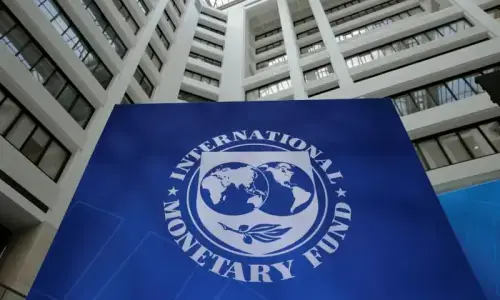
“You are entering the world’s best citrus-producing regions,” boasts the signpost to every motorist on the motorway as they approach the Sarghoda district from Lahore or Islamabad side. Lying between rivers Chenab and Jhelum or Chejh doab, the district comprising 1.4 million acres produces more than 60 per cent of the total 2.1m tonnes citrus and is mostly known for the unique taste of its kinnow, a citrus variety.
Before the introduction of the canal system by the British, the district, then known as Shahpur, used to serve as pastures (Bars in the local diction). Sargodha, the current headquarters of the district, was founded in 1903 as the Lower Jhelum Canal colony along the railway track laid in the last decade of the 19th century.
With a population of around 4.9m in the district, Jatt is the major tribe whose sub-clans like Noons, Ranjhas, Pirachas, Cheemas, Gondals, Midhianas, Chatthas, Tiwanas and Luks are mostly engaged with farming. Cheemas, Chatthas and the like from Sialkot and Indian Punjab districts were incentivised by the English through the grant of large tracts of lands to migrate to Sargodha for cultivating barren lands at the inauguration of the canal system. There are also Rajputs, Araen and Kambohs but have mostly migrated after the Partition and inhabit urban centres.
More than 60pc of the 2.1m tonnes grown is in this district of Punjab, most of which is consumed locally
Noons, Pirachas, Cheemas and Ranjhas are politically influential clans. Malik Feroze Khan Noon served as prime minister for a few months in the 1950s, while scions of Pirachas, Cheemas and Ranjhas have been serving in various federal and provincial cabinets. Rising from the 1979 non-party local body polls, late Malik Anwer Ali Cheema remained unbeaten in all National Assembly elections till his death before the 2018 polls.
The climate and soil texture is suitable for most kinds of Rabi and Kharif crops, fruits and vegetables. There is also a very wide range of plant and animal species in the district. Amongst plants, Shisham (Dalbergia sissoo), Kikar(Acacia), Phulai (Acaucs Moclerta), Simal (Bombax ceiba), Siris (Albizia lebbeck), Toot (Morus Alba), Neem (Azadirachta Indica), and Jamman (Eugenia Jambolana/Black Plum) are found in abundance.
Wheat, rice, sugarcane, fodder, cotton and maize are major crops. Peas, spinach, cauliflower, coriander, squash, bitter gourd, chillies, radish, carrots are the major vegetables. Wheat is sown on around 0.5m acres, sugarcane on 150,000 acres, rice on 115,000 acres, citrus orchards claim 220,000 acres, various types of fodder on 190,000 acres, and cotton at around 3,000 acres.
It was a cotton-producing region until the onslaught of sugarcane that began with the commissioning of the first sugar mill in 1966 by the Noon family. Two more mills were established in the later years, while another is functional close to the district’s boundary in Jhang. Free supply of seeds and offers of cash payments in advance by the mills attracted the farmers towards growing sugarcane.
It worked against the cotton crop because the climatic changes, particularly the increase in moisture due to the water-guzzling sugarcane, invited pest attacks on the white lint. The resultant need for pesticide sprays added to the cost of production and the drop in production further incentivised growers away from it. Now cotton is sown on just a couple of thousands of acres for the lovers of ‘desi’ lint. Consequently, almost all ginning factories and the lone Noon Textile Mill in Bhalwal are closed. The mill restarted functioning after it was sold to another party.
Hanif Hanjra says almost 30pc of the produce is lost because of poor post-harvest technologies
Citrus and guava (presently sown over 4,500 acres) orchards also gained popularity in the early 1970s. A couple of citrus value addition units were also set up, one by the Noons, during that period. Iran was the largest market for Pakistani citrus fruits followed by Afghanistan. The revolution in Iran and the eruption of the Afghan war damaged both markets to the disadvantage of growers and traders. In the late 1980s, an American company, Cargill, also set up a large citrus juice extracting plant but it left after the first wave of terror incidents in the country.
The boom in the citrus value addition industry came in the 1990s and now over 200 units are engaged in the grading, polishing and waxing of kinnow across the district. The value chains are very diverse, and a number of different players actively participate in these chains, which ultimately decide the destination of citrus fruit.
The waxing improves the fruit’s shelf life to 60 days enabling the country to fetch over $200 million per year through exports to Russia, Ukraine, Indonesia, Middle East, Sri Lanka, Singapore, and some European destinations. Legal and illegal exports to Iran and Afghanistan also continue. However, only 10-12pc of around one million tonnes produced is exported and the rest is consumed in the local market.
Qasim Ejaz, a kinnow exporter, bemoans that little attention is being paid by the federal commerce ministry to their problems. He says the authorities are not even ready to raise the quota issue with their Indonesian counterparts as the island country issues a quota at a time when kinnow season is about to end here. He says they have suggested barter trade with Indonesia, selling kinnow against large palm oil imports, but to no avail.
Hanif Hanjra, a progressive farmer from Bhalwal, says almost 30pc of the produce is lost because of poor post-harvest technologies and unskilled labour employed to pick the fruit. He says that each tree produces between 100-150kg kinnow. The yield is reducing each year owing to a lack of research on developing new seeds, spurious insecticides being marketed with impunity, deeper tillage and excessive use of fertilisers damaging natural soil fertility, he laments. Greenery and canker diseases are also causing financial losses to the growers as the agriculture research institutions are failing to find a solution to fruits’ whitefly problem.
Fish farming is a new trend gaining attention in the countryside. Fish farms at around 5,000 acres of land have sprung up during the last four years or so. Mehr Abrar, a fish farmer from Sillanwali tehsil, says mostly low-lying unutilised land or the tracts affected by salinity and
waterlogging are being used to earn extra money by the farmers. He claims that Sargodha is third in producing fish among 36 districts in Punjab. A frozen fish processing plant is also being set up at the recently established motorway industrial zone close to the Bhera interchange.
Published in Dawn, The Business and Finance Weekly, December 21st, 2020



































